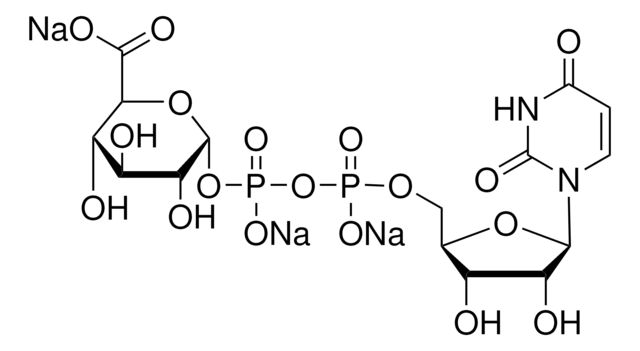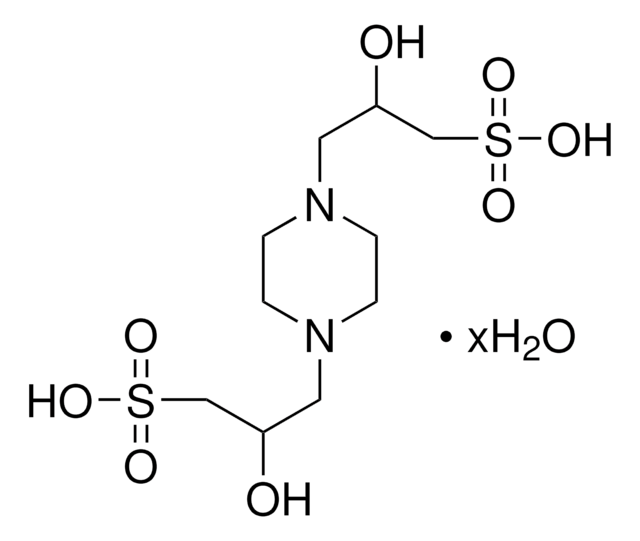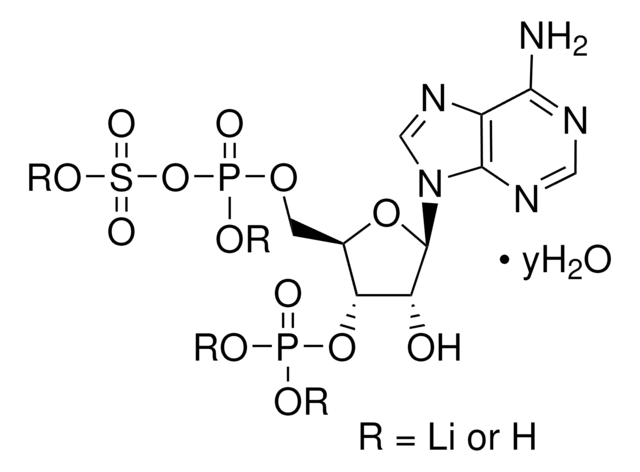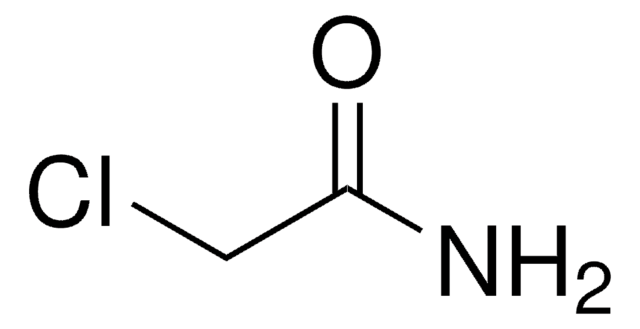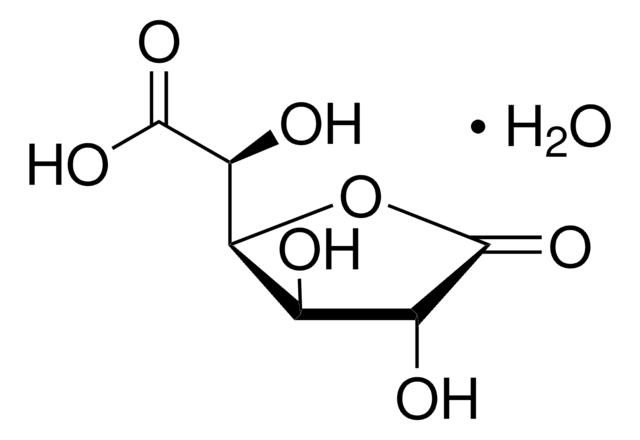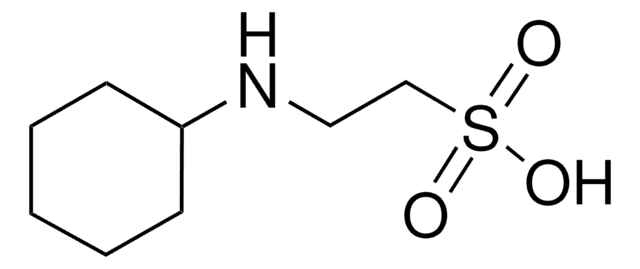E9502
EPPS
≥99.5% (titration)
Sinonimo/i:
Acido N-(2-idrossietil)piperazin-N′-(3-propansolfonico), Acido 4-(2-idrossietil)-1-piperazinpropansolfonico, Acido 4-(2-idrossietil)piperazin-1-propansolfonico, HEPPS
About This Item
Prodotti consigliati
Livello qualitativo
Saggio
≥99.5% (titration)
Forma fisica
powder
pH
7.3-8.7
Intervallo di pH utile
7.3-8.7
pKa (25 °C)
8.0
pKa
8
Punto di fusione
237-239 °C (lit.)
Solubilità
H2O: 25 g + 50 mL, clear, colorless
λmax
A290 at ≤0.1 (C=33% w/w)
applicazioni
diagnostic assay manufacturing
Stringa SMILE
OCCN1CCN(CCCS(O)(=O)=O)CC1
InChI
1S/C9H20N2O4S/c12-8-7-11-5-3-10(4-6-11)2-1-9-16(13,14)15/h12H,1-9H2,(H,13,14,15)
OWXMKDGYPWMGEB-UHFFFAOYSA-N
Cerchi prodotti simili? Visita Guida al confronto tra prodotti
Categorie correlate
Applicazioni
- to verify the effect of pH variation on the proteolytic activity of the posterior midgut (PMG) contents and anterior midgut (AMG) tissue homogenate
- to prepare a destaining buffer to destain intensely stained gel pieces
- to prepare digestion buffer for in-gel enzymatic digestion
- to reconstitute the digested peptides for the processing of brain-derived extracellular vesicle (EV) proteins and 16-plex isobaric tandem mass tag (TMT) peptide labeling
Codice della classe di stoccaggio
11 - Combustible Solids
Classe di pericolosità dell'acqua (WGK)
WGK 3
Punto d’infiammabilità (°F)
Not applicable
Punto d’infiammabilità (°C)
Not applicable
Dispositivi di protezione individuale
Eyeshields, Gloves, type N95 (US)
Certificati d'analisi (COA)
Cerca il Certificati d'analisi (COA) digitando il numero di lotto/batch corrispondente. I numeri di lotto o di batch sono stampati sull'etichetta dei prodotti dopo la parola ‘Lotto’ o ‘Batch’.
Possiedi già questo prodotto?
I documenti relativi ai prodotti acquistati recentemente sono disponibili nell’Archivio dei documenti.
I clienti hanno visto anche
Il team dei nostri ricercatori vanta grande esperienza in tutte le aree della ricerca quali Life Science, scienza dei materiali, sintesi chimica, cromatografia, discipline analitiche, ecc..
Contatta l'Assistenza Tecnica.


